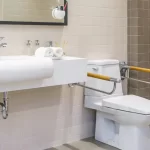Budget Planning: Getting Started
Embarking on home improvement projects can be exciting and transformative, but without a well-thought-out budget, it can quickly become stressful. Establishing a clear financial plan is the cornerstone of any successful renovation. Before embarking on this adventure, scrutinize how much you’re willing and able to spend. It will involve evaluating your finances and determining which areas offer the most value for money. For example, investing in kitchen renovations might yield a better return than cosmetic changes in living spaces. When visiting retailers with a thorough list of materials and a well-researched budget can make the difference between a streamlined and overwhelming project. Understanding the market prices for various items—from lumber to light fixtures—will enable you to distinguish between necessary purchases and potential splurges. Keeping an eye on special deals can also reduce costs significantly. Setting aside time to search for discounts or waiting for seasonal sales may require patience, but the financial benefits can be substantial.
Smart Shopping: Making the Most of Promotions and Discounts
Lastly, unlocking the potential of seasonal shopping can yield impressive financial benefits. Know when The Home Depot offers the best discounts and promo codes and plan your purchases accordingly. Events such as Black Friday can provide opportunities to purchase high-ticket items at a fraction of the cost.
Robust planning and proactive fiscal management are the keystones in making home improvement dreams a reality. Harnessing the right financial tools, anticipating the process’s trials and tribulations, and learning from others’ success can empower homeowners to conduct renovations that enhance their homes and lives while safeguarding their financial futures.
Cost-Benefit Analysis of DIY vs. Professional Renovations
Due to the myriad online tutorials and home improvement shows, do-it-yourself projects have surged in popularity. However, it is essential to consider the cost-benefit ratio of undertaking a project without professional help. While you may save on labor costs, the value of your time, the endurance required for project completion, and the complexity of the task must be factored into your decision. One must weigh expertise against potential cost savings and examine the intricacy of the project to determine whether professional help will be more cost-effective in the long run. DIY mishaps can also lead to additional expenses that surpass the original quotes from professionals.
Before starting this DIY journey, it’s also wise to calculate the cost of tools and machinery that may need to be purchased or rented—expenses that can quickly add up. Sometimes, what appears to be a cost-saving venture may end in a higher outlay if the necessary tools are expensive or complicated. It is a delicate balance that every homeowner must strike based on their circumstances and skills.
Ways to Save Money Without Compromising Quality
While budget constraints are a reality for most, intelligent planning and creativity can lead to significant cost savings without degrading the quality of the outcome. Exploring alternative materials with the same aesthetic appeal and functionality at a fraction of the cost can boost savings. The introduction of composite materials and advances in manufacturing means that these alternatives often offer durability similar to their high-end counterparts. Another avenue for savings is sustainability. Opting for energy-efficient appliances or eco-friendly materials can qualify for government rebates or tax credits, leading to long-term utility savings. These choices’ slightly higher initial cost often results in lower operational costs, which benefit the homeowner long after the renovation dust has settled. Making these brighter, sustainable choices helps the environment and brings a different kind of value to the home improvement project.
Essential Tools for Accurate Budget Tracking
Keeping track of your spending in real-time is critical to ensuring your budget stays manageable. Once your budget is set, adhering to it requires the right tools. Numerous mobile apps and financial tracking software offer convenient features to monitor expenditures, categorize costs, and alert you when you’re near your spending limits. Digital tools provide a dynamic and interactive way to manage your finances, which can adapt as your project evolves. The old-fashioned spreadsheet can be a reliable resource for those who prefer tactile engagement or seek simplicity. Manually entering costs can encourage a more personal connection to the budget, prompting more intentionality with spending. Whether digital or analog, the key is to maintain a relentless commitment to financial tracking and transparency throughout the home renovation journey.
Typical Pitfalls in Home Improvement Budgeting
It’s not uncommon for home improvement projects to go over budget. One of the typical reasons for this is an underestimation of costs. Materials and labor can be more expensive than initially expected, and unforeseen circumstances often arise. Even everyday items can present cost challenges, so it’s prudent to reserve a portion of the budget, typically around 10-20%, for unanticipated expenses. Homeowners can do much to avoid these pitfalls by researching, anticipating potential issues, and planning as detailed as possible. It includes considering the time of year (as prices can fluctuate seasonally), the availability of contractors, and the potential for delays due to weather or back-ordered materials. Collection of this information and proactive budgeting are instrumental in circumventing the financial disappointments that can accompany home remodeling.
Securing Financing for Your Home Improvement
Additional funding may become necessary to cover the costs of substantial home renovations. This step requires carefully examining options and a comprehensive understanding of their implications. While savings are the first port of call, loans or credit may offer the necessary leverage. As with any financial agreement, assessing the terms and interest rates is vital to ensure they align with your financial goals and circumstances. Each financing method has benefits and considerations, with options like home equity lines of credit or mortgage refinancing available to homeowners looking to capitalize on their property’s value.
Insurance and Permits: The Often-Forgotten Budget Items
Insurance and permits represent the less glamorous side of home improvements but are just as crucial to the process. It is essential to account for these costs to avoid expensive and sometimes legal ramifications post-project. Adding a specific allowance in the budget for permits—which can vary significantly by locale and scope of work—and any additional insurance needed to protect the investment during construction will help ensure a smooth renovation process without administrative or financial hiccups later on.
When to Re-Evaluate Your Budget Mid-Project
Mid-project financial reviews should be considered. They can provide critical insight into the health of your project’s budget and allow for course corrections before a minor issue becomes a significant setback. Whether it’s due to changing your mind about a bathroom tile or encountering structural problems that require more extensive work than planned, such developments directly impact your budget. Regular check-ins on your financial plan are a hallmark of budget-savvy homeowners.


 Customizable Bathroom Fixtures – Tailoring Your Space
Customizable Bathroom Fixtures – Tailoring Your Space  5 Easy Ways to Incorporate Artistic Elements in Your Kitchen
5 Easy Ways to Incorporate Artistic Elements in Your Kitchen  Smart Budgeting for Your Home Improvement Projects
Smart Budgeting for Your Home Improvement Projects  The Role of Glass Repair and Replacement in Preserving Architectural Integrity
The Role of Glass Repair and Replacement in Preserving Architectural Integrity  Accessible Bathroom Design – Making Bathrooms Safe and Comfortable for Everyone
Accessible Bathroom Design – Making Bathrooms Safe and Comfortable for Everyone  Manchester Kitchen Fitters Unveiled: How to Make the Right Choice
Manchester Kitchen Fitters Unveiled: How to Make the Right Choice  Bathroom Tiles Are Practical, Easy to Clean and Highly Customizable
Bathroom Tiles Are Practical, Easy to Clean and Highly Customizable 
